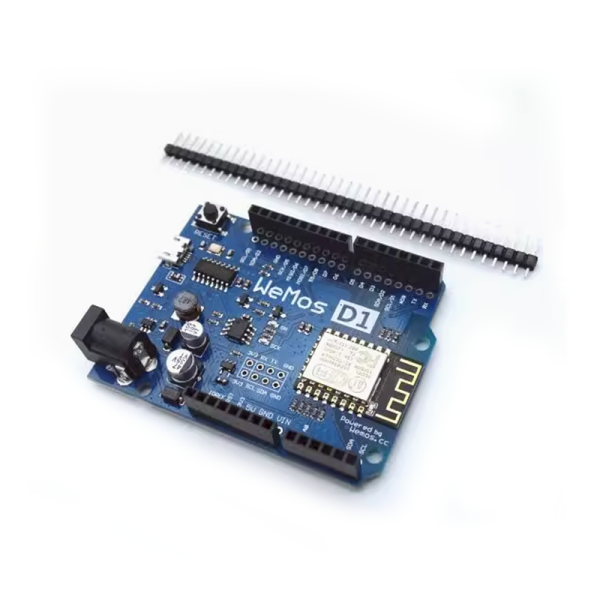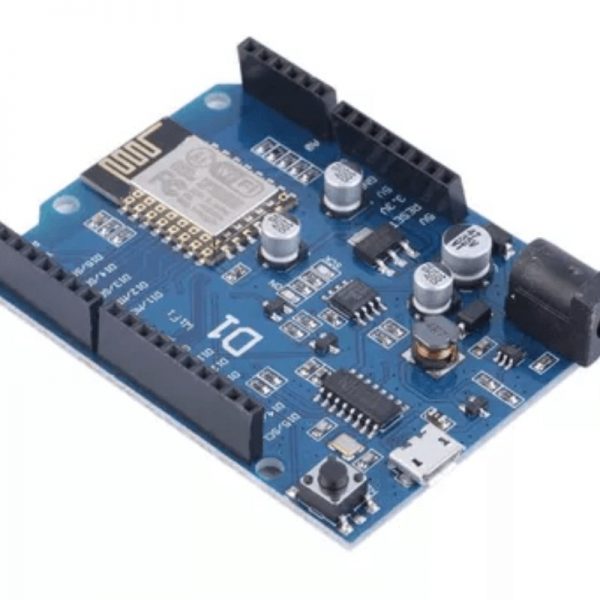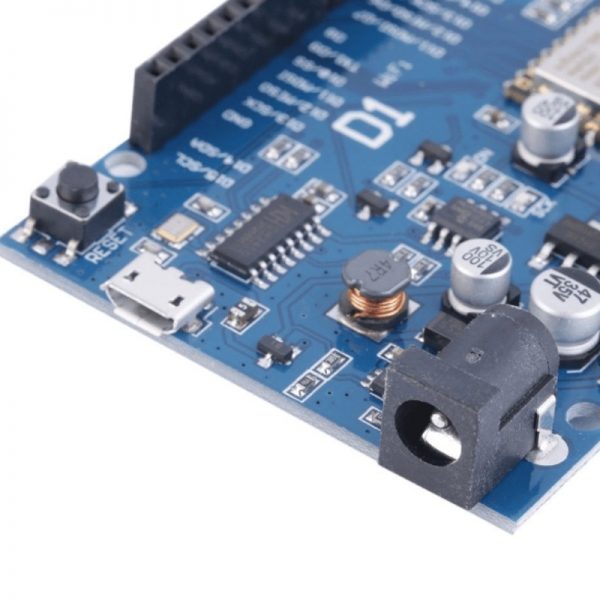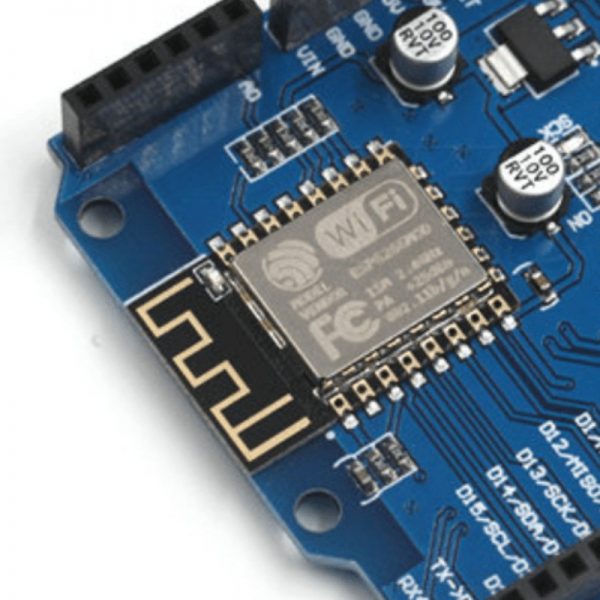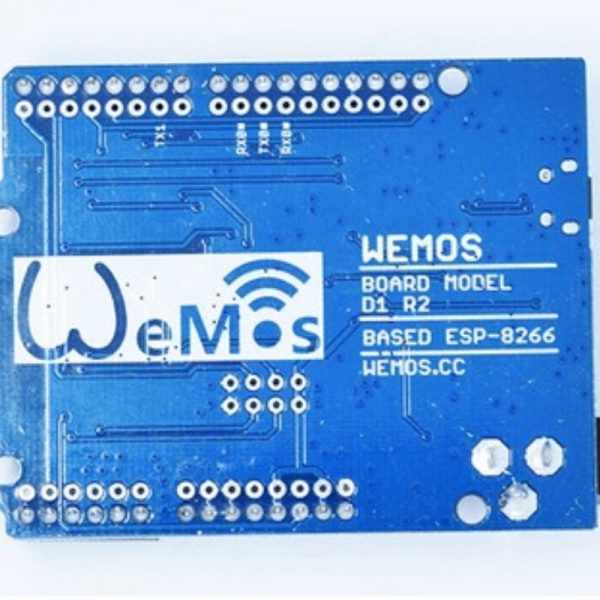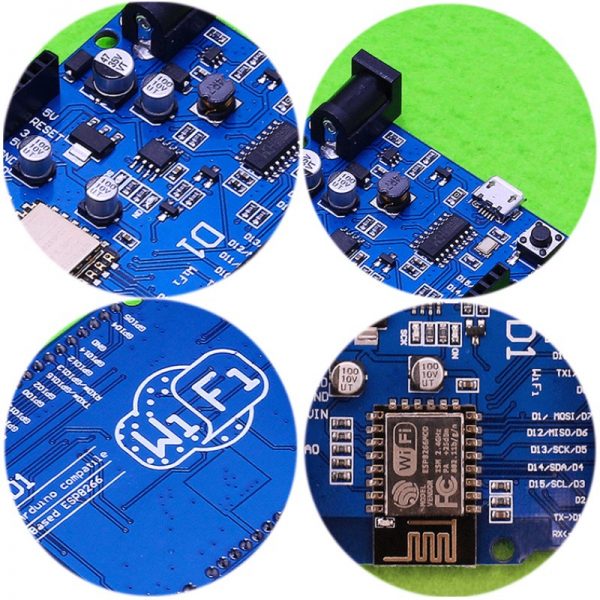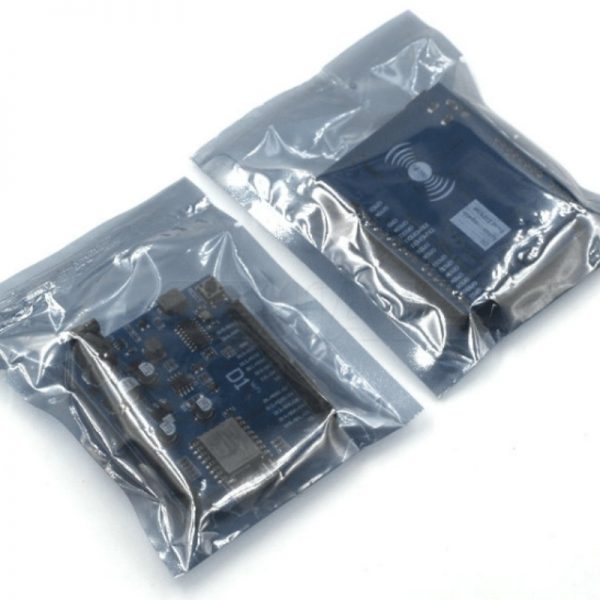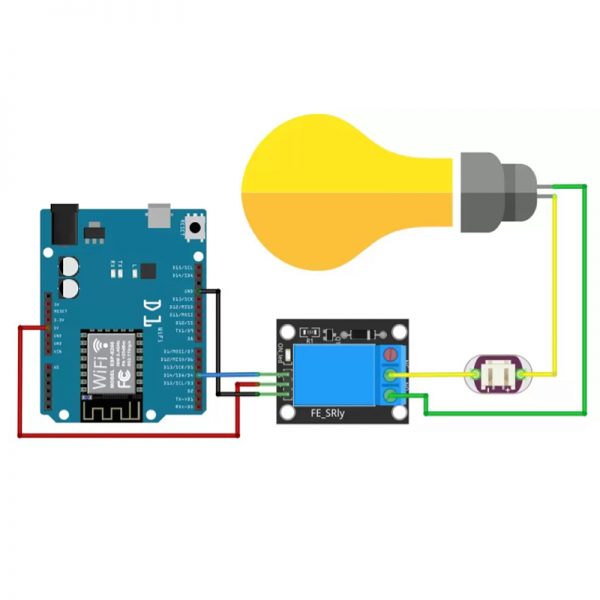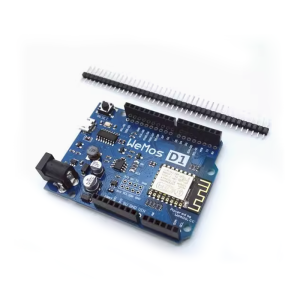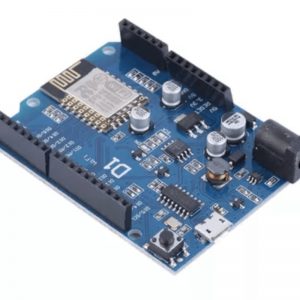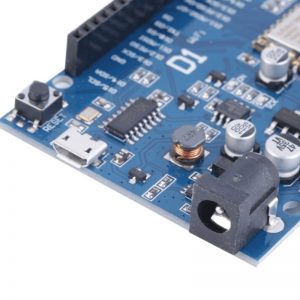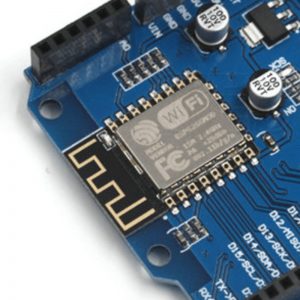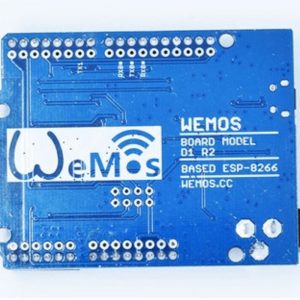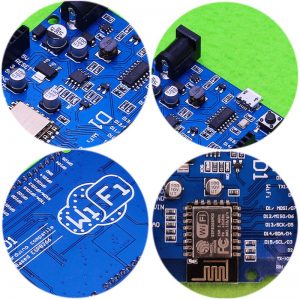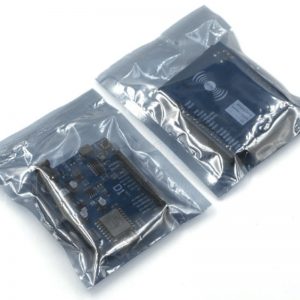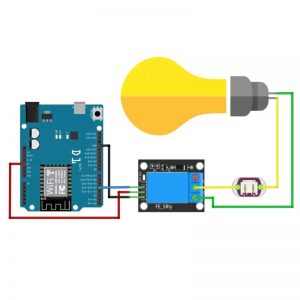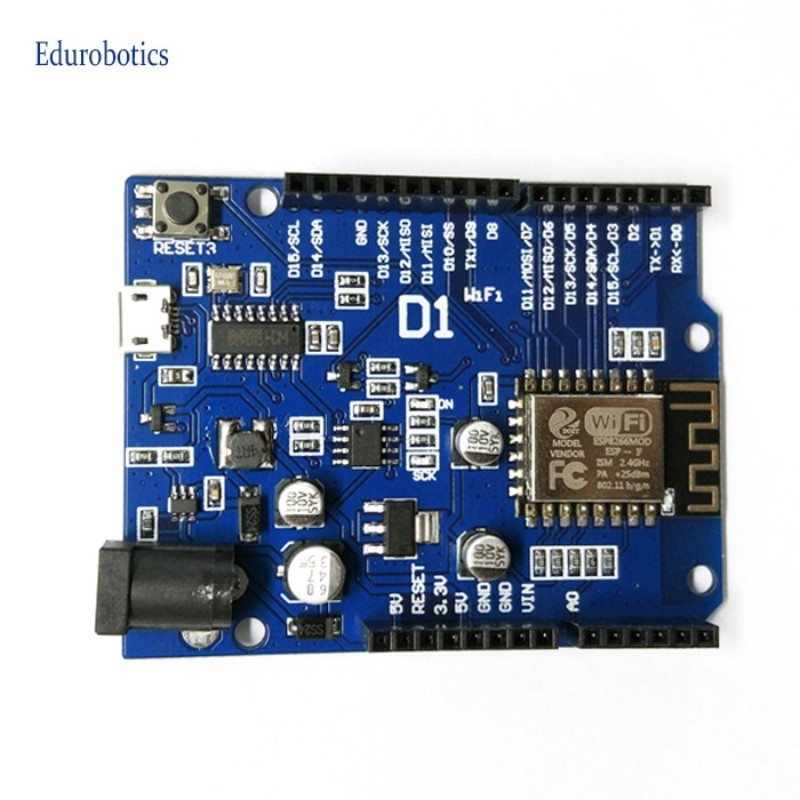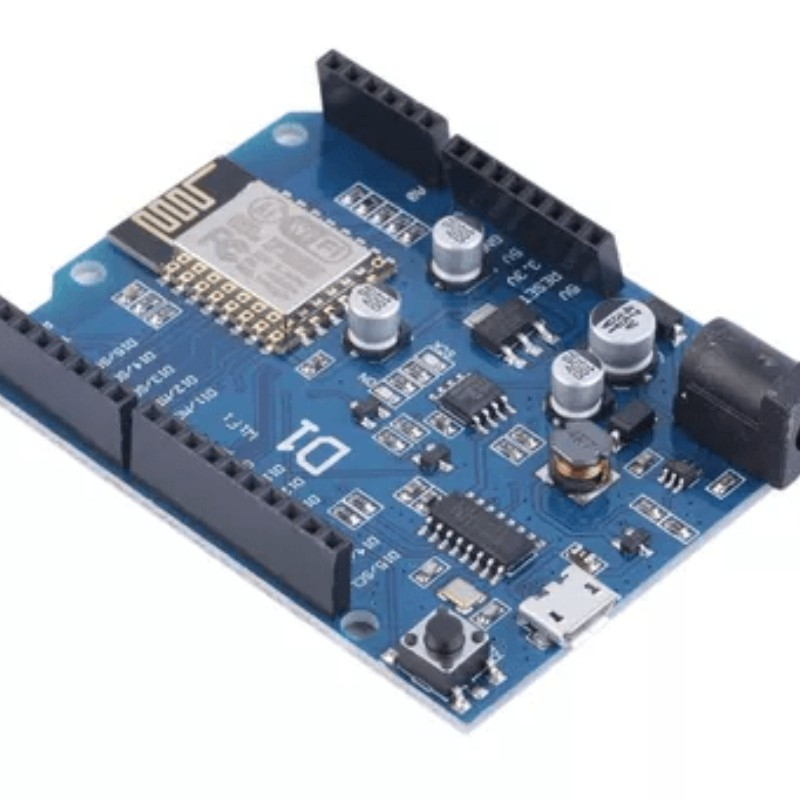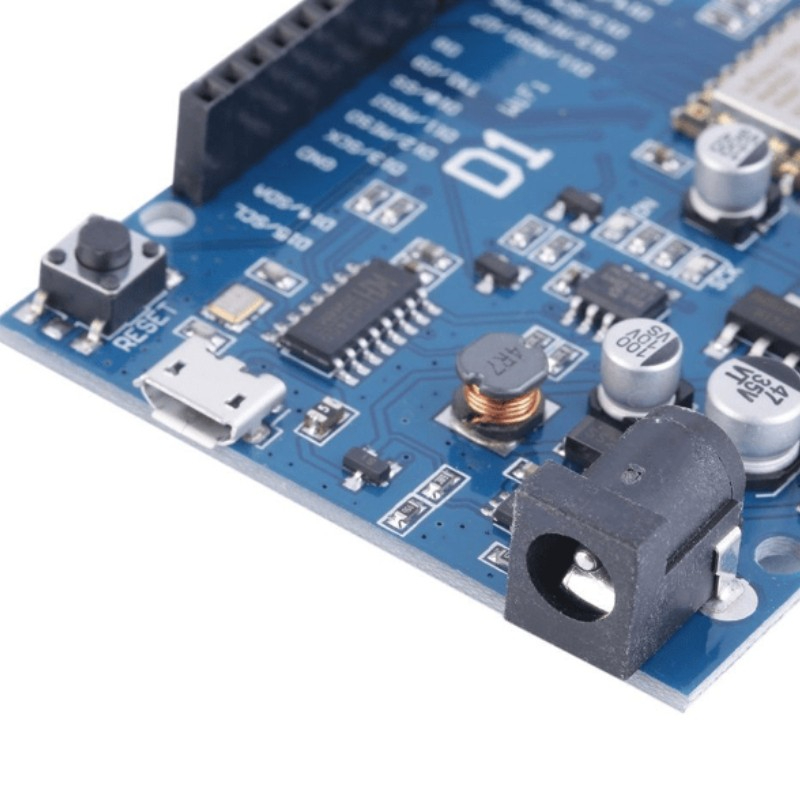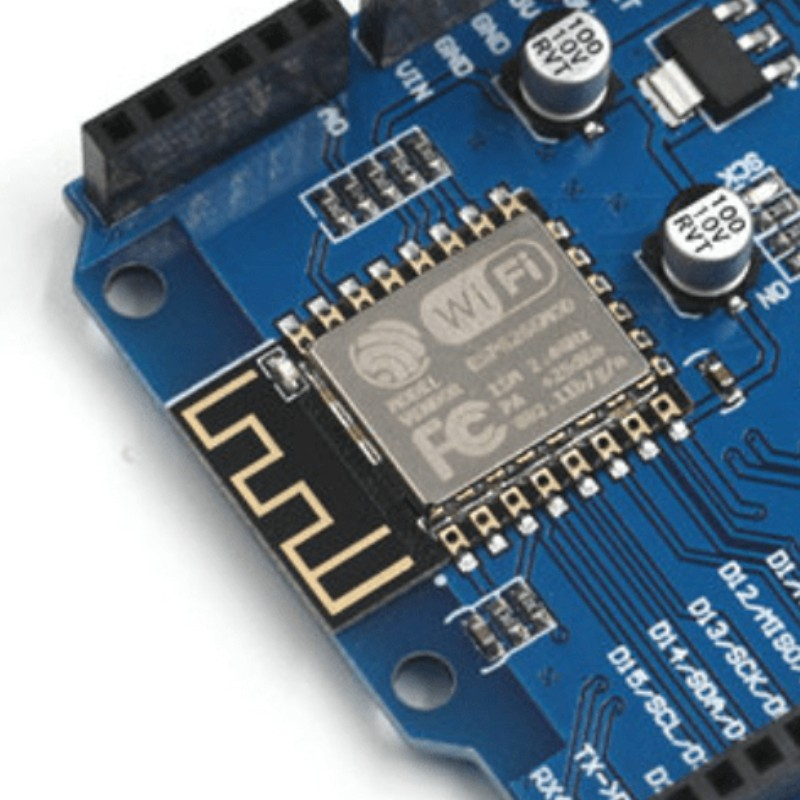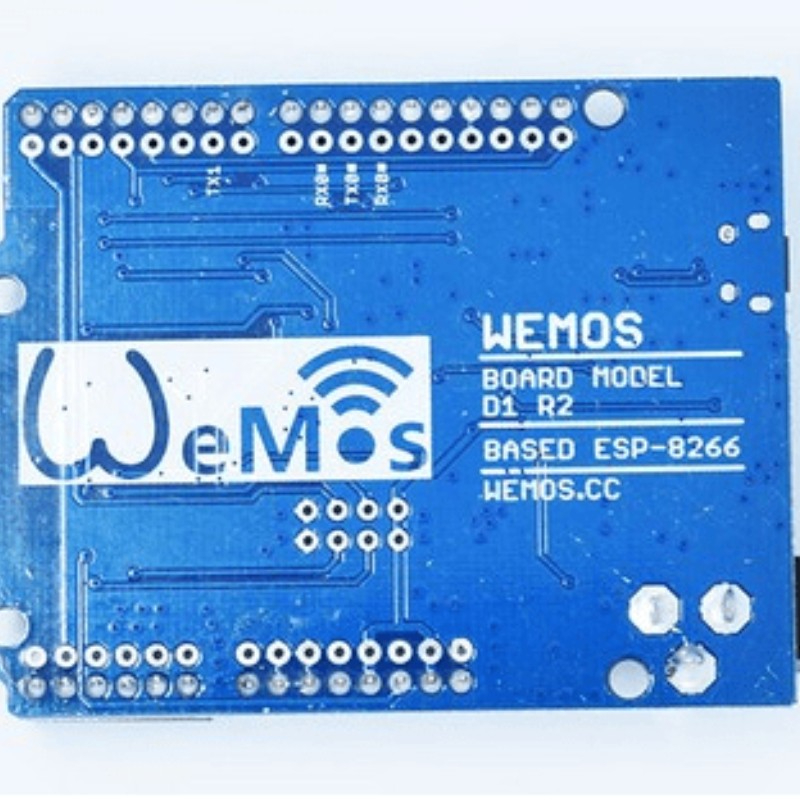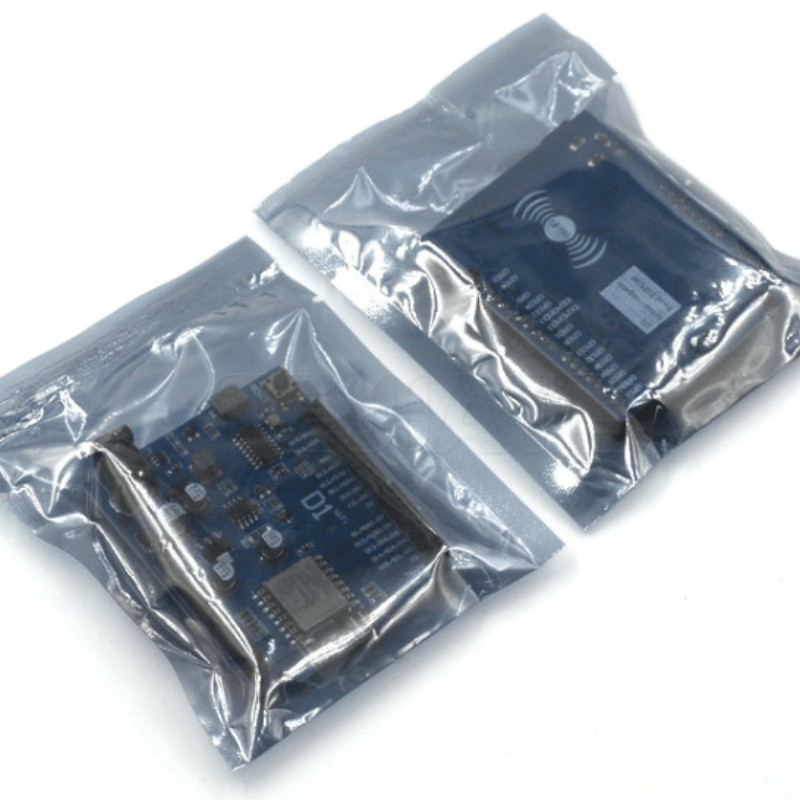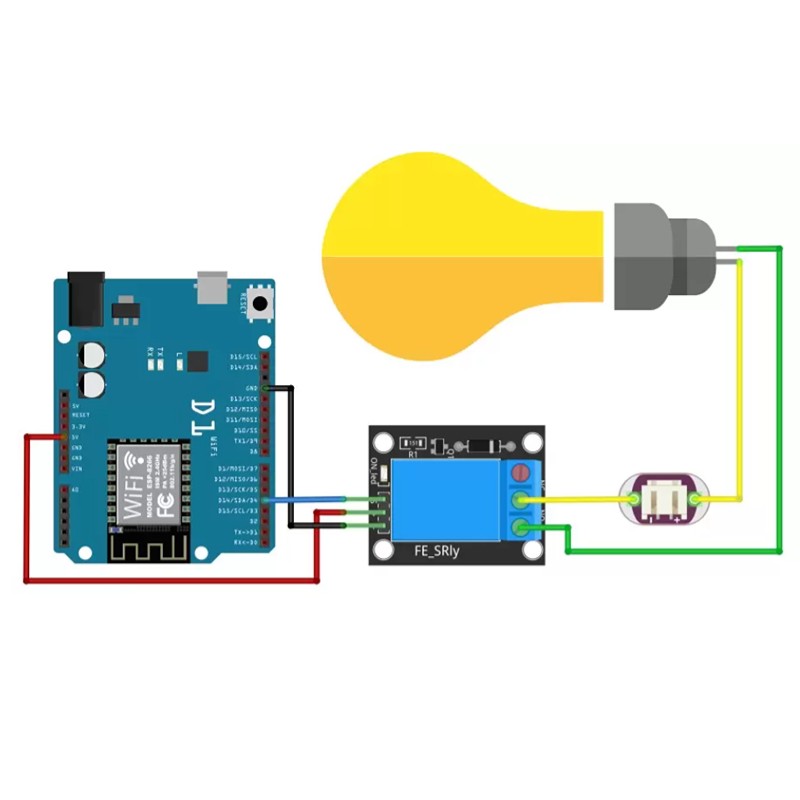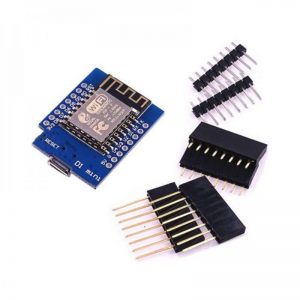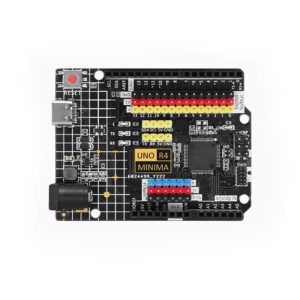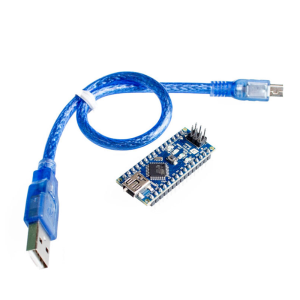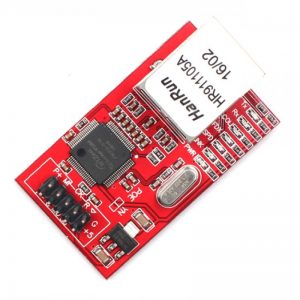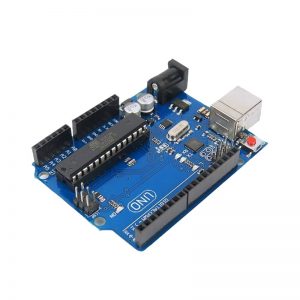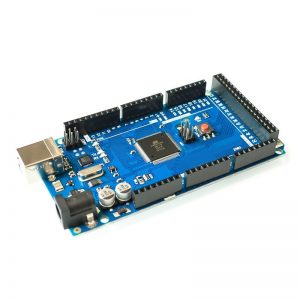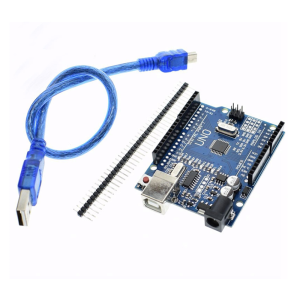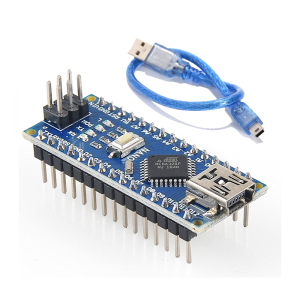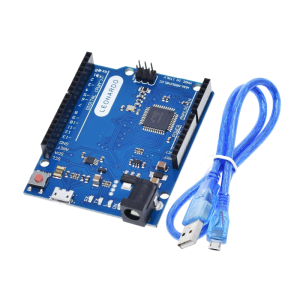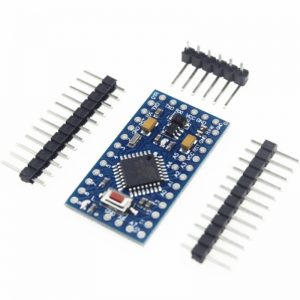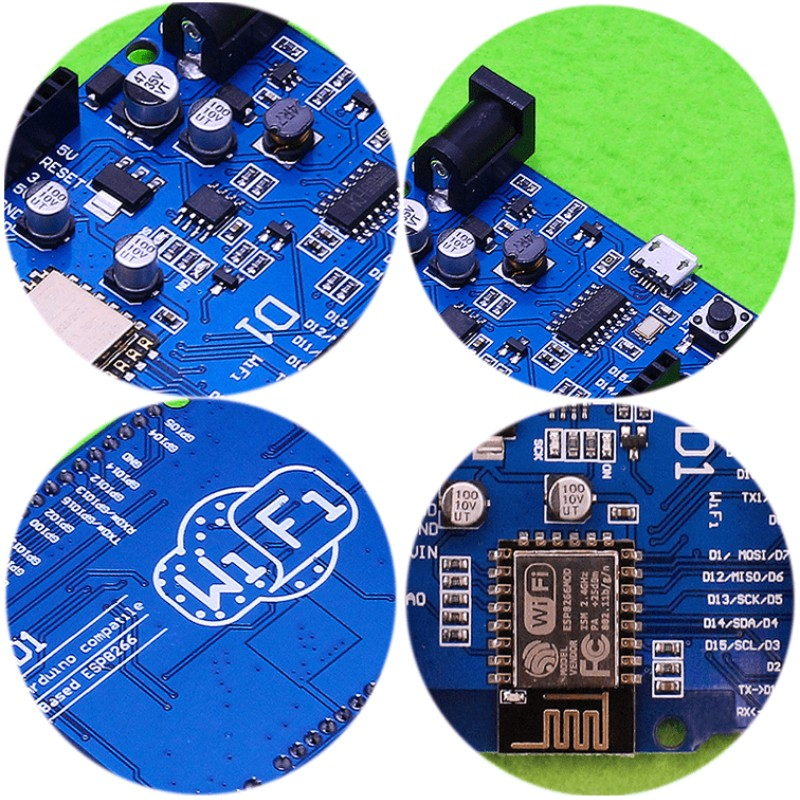
WeMOS D1:
The WeMOS d1 which is an Arduino compatible board with the built-in ESP8266 Wifi Module. WeMos D1 Arduino compatible development board is the cheapest WiFi-enabled board available today. It is a WiFi enabled based on the ESP8266 chip. The board looks like an ordinary Arduino board. The dimensions and the pin layouts are exactly the same. So, this board is compatible with all the existing shields for Arduino. But don’t expect them to work at once, since the libraries available for the ESP8266 chip are few so far. The boards, instead of an ATMEGA chip that standard Arduino boards use, use the impressive ESP8266 WiFi chip. The ESP8266EX chip that the WeMos D1 board uses offers:
- A 32 bit RISC CPU running at 80MHz
- 64Kb of instruction RAM and 96Kb of data RAM
- 4MB flash memory!
- Wi-Fi
- 16 GPIO pins
- I2C,SPI
- I2S
- 1 ADC
First of all you are going to notice there is no Atmel chip on the board. The esp8266 is the heart of the board acting not only as the WiFi chip but also as the main processor, other ICs on the board include the CH340 which is our UART USB. ESP8266 D1 R1 IOT board which is an alternative to NodeMCU this is built on ESP12e IC.
It has got a USB socket for power as well as serial communication. A separate power adapter is also there onboard, a 3.3 volt regulator is there so you can use an external adapter up to 12 volt. For our interface it has a micro USB, and then we have our CH340 chip, and having a reset switch. It consists of barrel Jack for DC input and we have got a selection of pin headers TX and RX. For I2C communication it has SDA and SCL pins and have digital pins which are D3, D4, D5, D6, and D7. Then we have another I2C communication pins which are copy of D1 and D2. This board only has the one analog input. We have Vin, ground, 5 volt, 3.3 Volt, and reset. Then we have some extra pin headers for 3.3 volts, RX, TX, and ground.
WeMOS D1Features:
- 11 digital IO, interrupt/pwm/I2C/one-wire supported(except D0)
- 1 analog input(3.2V max input)
- a Micro USB connection
- Compatible with MicroPython, Arduino, nodemcu
WeMOS D1Technical specs:
| Operating Voltage | 3.3V |
| Digital I/O Pins | 11 |
| Analog Input Pins | 1(3.2V Max) |
| Clock Speed | 80/160MHz |
| Flash | 4M Bytes |
| Size | 34.2*25.6mm |
| Weight | 3g |
WeMOS D1Pin Description:
| Pin | Function | ESP-8266 Pin |
| TX | TXD | TXD |
| RX | RXD | RXD |
| A0 | Analog input, max 3.2V | A0 |
| D0 | IO | GPIO16 |
| D1 | IO, SCL | GPIO5 |
| D2 | IO, SDA | GPIO4 |
| D3 | IO, 10k Pull-up | GPIO0 |
| D4 | IO, 10k Pull-up, BUILTIN_LED | GPIO2 |
| D5 | IO, SCK | GPIO14 |
| D6 | IO, MISO | GPIO12 |
| D7 | IO, MOSI | GPIO13 |
| D8 | IO, 10k Pull-down, SS | GPIO15 |
| G | Ground | GND |
| 5V | 5V | – |
| 3V3 | 3.3V | 3.3V |
| RST | Reset | RST |
